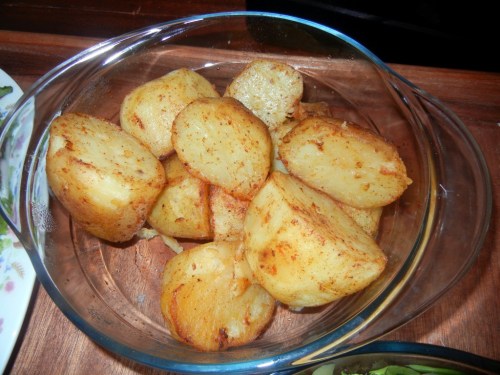After two weeks of making exclusively Ghanaian foods, I was ready for a break. In week three I learned how to prepare a hodge-podge of breakfast foods, and later catered an Italian feast for the birthday of my AFS friend Bany.
Practicals Day 5:
Pineapple Jam
Pineapple jam was actually very easy to make, and far superior to the one available in the market. All it required was grating pineapple in a pot with water, lemon juice, sugar, and a few cloves.
Nothing else was added. The jam consistency was achieved simply by boiling the fruit for over two hours to eliminate most of the water.
As you can see from the above picture, more than half of the juice was boiled away. No thickeners were added. The jam was very fruity and delicious, but the added sugar was too much since the pineapples were very ripe. Next time I’ll half the sugar, or try making the jam using local honey.
Dinner Rolls
This was the first time I had ever kneaded dough. Some of my classmates were shocked when I said that back home I usually buy pre-made pizza dough at Publix or Whole Foods.
It took me a while to find the rhythm of kneading. While I was doing so, Ghanaians stared at me – shocked at a white man doing such work.
Eggs Six Ways
By my request, I leaned six different ways to prepare eggs. Eggs are something new to my diet since arriving in Ghana, and I actually enjoy them prepared almost every way:
- Omelette – My favorite preparation, especially with added onions, sweet peppers, and tomatoes.
- Sunny Side Up – Also great, although the texture of the egg white was puzzling at first. It’s amazing how versatile eggs are.
- Soft Boiled – My favorite out of the boiled.
- Hard Boiled – Not bad, I just find the yolk a bit too dry.
- Boiled (in the shell) – At first, I really liked the soft and liquidy texture of the egg seasoned with the black pepper inside. But as I ate more and more, I enjoyed it less and less. After eating roughly half of the egg, I stopped as I was starting to feel nauseous.
- Poached – The white was very good, but the yolk felt as though it was still raw. I gagged through one, and gave the second away.
I’m starting to really appreciate spaghetti marinara. It’s simple enough to be made in minutes, yet extremely delicious.
An added bonus is that I can throw in ‘the kitchen sink’ of vegetables and it only enhances the flavor. Today I used fresh zucchini (squash), tomatoes, cabbage, onion, garlic, tomatoes, sweet peppers, cauliflower, and basil I had bought from the market. The vegetables were much-loved by everyone, seeing as how they are notably absent from the standard Ghanaian diet.
My teacher, Auntie Charity, had never tasted spaghetti marinara before. She took a small bite, and her eyes opened wide; I could immediately tell that she loved it. She stifled a cough, and told me to add a little salt to the dish. After following her advice, she asked me to make her a plate so she could further ‘check the seasoning’.
















 Mama always said that if you deep fried a shoe, it’d taste good. And while I have yet to taste a deep-fried shoe, the theory of anything deep-fried tasting delicious has yet to be proven wrong.
Mama always said that if you deep fried a shoe, it’d taste good. And while I have yet to taste a deep-fried shoe, the theory of anything deep-fried tasting delicious has yet to be proven wrong.












































